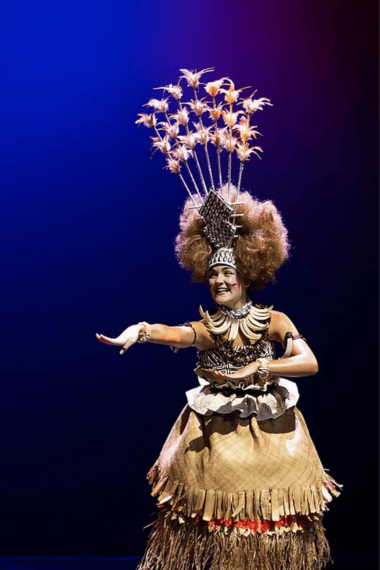Miss Understood: Pamela Anderson

The world’s most misunderstood pin-up tells Decca Aitkenhead the unvarnished truth about her turbulent upbringing, returning to live in her rural hometown, and why she still believes in love.
EARLIER THIS MONTH, Pamela Anderson stood in her kitchen while her mother criticised her and thought: “You should have had the abortion.” She didn’t say it out loud, “but in my head”. “Because since I was born, it’s been my fault — that’s why she married my father. So I’ve always had that on my shoulders, where I felt responsible for everything that went wrong.”
She suspects her mother feels the same way about her. “I do, actually. I don’t think it’s conscious. But I think subconsciously, in her mind, she has the idea of a different life that she could have led if she hadn’t gotten pregnant at that age. It was a shotgun wedding. And I felt responsible, even when I was little. That’s why I’m happy about writing this book, because I just feel, like, we forget that people have stories. And we don’t know where they come from, or what they’ve gone through, and then we’re quick to judge people too.”
For most of her life, by most of the world, Anderson has been judged. Barely 22 when she first appeared on the cover of Playboy, she became a global household name in 1992 by sprinting in slow motion across the California sand in a red bathing suit. The Baywatch star’s whirlwind wedding to the Mötley Crüe rock star Tommy Lee three years later, on a Mexican beach just four days after they started dating, secured her notoriety as the iconic blonde bombshell wild child of her time.
When the newlyweds’ safe was stolen from their home less than a year later, and a sex tape spliced together from private home videos was sold – first to Penthouse and then to the planet via the internet – many assumed it was a trashy publicity stunt contrived by the couple. They tried to sue, but lawyers told Anderson she had no right to privacy after posing for Playboy. Slut-shamed by the tabloids, hounded by paparazzi, her marriage began to unravel and when Lee attacked her in 1998, while she was holding their newborn second son, she left him. He was sentenced to six months in jail; they divorced, they reconciled, they split again.
Twenty-five years, five more marriages and multiple Playboy covers and reality TV shows later, I opened her memoir expecting the breathless vacuity of a pin-up. I was not the only one. “People were, like, ‘There’s no way you could write a book.’ Even my kids were saying, ‘Mom, you have to be able to write something that people are going to understand.’ ” She told them, “Guys, have a little faith in your mom, I think I can figure this out.”
Her literary agent told her, “Darling, you’re going to need some help.” She thought to herself, “I can write, you stupid shit, give me some credit. And so I wrote it.

Love, Pamela opens with a hauntingly elegiac portrait of a barefoot tomboy growing up among towering pines and small-town gossip on the shores of Vancouver Island, an outcrop of Canadian wilderness in the eastern Pacific. Teenagers when she was born, her parents were glamorously good- looking, dirt-poor and wildly volatile: “hot trouble, the local Bonnie and Clyde”. Her father was a poet and a chimney sweep, a big-drinking, poker-playing, street-car racing, game-hunting hell-raiser. Her mother was a waitress, homemaker, “magical mood- setter”, a captivating blonde curator of clambakes and beach bonfires and moonlit skinny-dipping.
Her father was also an ugly drunk, viciously cruel, handy with a belt, who terrorised his wife and drowned his daughter’s kittens before her eyes. Her mother was forever in the bathroom, weeping mascara-stained tears, and forever leaving him, bundling Anderson and her younger brother, Gerry, into a car to flee into hiding, to an exile of food stamps, powdered milk and loneliness. Madly in love with him, she always went back.
Anderson was molested by a female babysitter from the ages of six to ten. Her parents thought the babysitter was marvellous; she didn’t dare tell them. She lost her virginity at 12 when she was raped by a 25-year-old man; two years later, her teenage boyfriend and half a dozen of his friends gang-raped her. She escaped into her imagination – “that’s the survival mechanism” – finding solace in fairytales and imaginary friends.
She became the most accidental of sex symbols. While the world was drooling over her body, Anderson was reading philosophy and psychology, teaching herself poetry, art and activism. Her most important friendships have been with creative spirits – Werner Herzog, Vivienne Westwood, David LaChapelle – and her most important work her activism, campaigning for animal rights, refugees and the environment. She has always known people underestimate her; she is absolutely not who you might think.
Read the full article in Volume 2 of WOMAN Magazine, on sale until 27 May 2024.
Photos: @pamelaanderson on Instagram.
Words: Decca Aitkenhead, The Times.
Related Stories
Aniva Clarke was 10 years old when she became an environmental activist. Saving her beloved home of Samoa drives her to make a difference.



